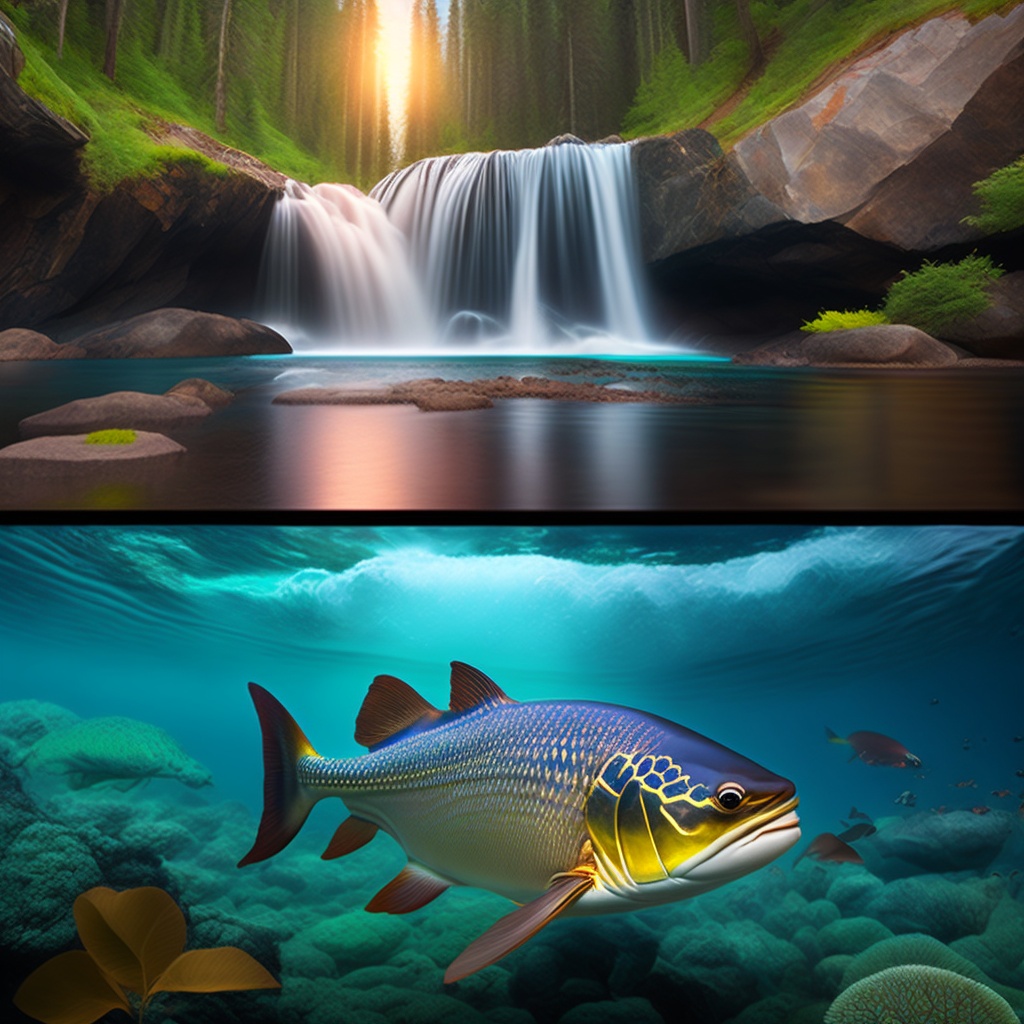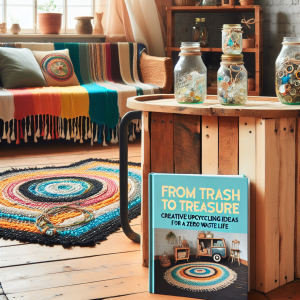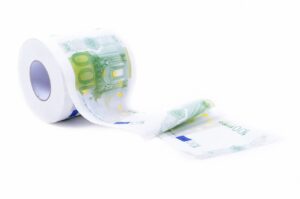Conservation vs Preservation: Introduction
Hey there, Earth-lover! Are you confused by the terms “conservation” and “preservation”? Do you scratch your head every time someone talks about saving the environment, wondering whether it’s like saving your favorite TV show on Netflix or keeping your grandpa’s old watch safe in a box? Well, buckle up, because we’re about to dive into the amusing and, at times, head-spinning world of conservation vs preservation!
This age-old debate has people donning their thinking caps and pulling out their hair all the same. It’s like choosing between two scrumptious desserts at a fancy restaurant; both seem divine, but which one is right for you? Is conservation the hero we all need, or does preservation hold the keys to our future?
Grab a cup of your favorite beverage and some popcorn. We’re not just exploring dry facts here; we’re setting off on an adventure filled with laughter, learning, and, yes, a tad bit of sarcasm. Ready to unravel this eco-mystery? Let’s dive right in!
What’s in a Word?
Before we get down to the nitty-gritty, let’s understand what we’re even talking about here. “Conservation” and “preservation” might sound like they’re twins separated at birth, but oh boy, they couldn’t be more different! It’s like comparing a roller coaster ride to a leisurely stroll in the park. Both are exciting, but in very different ways. Now, let’s dissect these fancy terms and find out what they really mean.
Definition of Conservation
Ah, conservation, the friendliest sibling of the two. Imagine you have a box of cookies. You know you want to eat them all (who wouldn’t?), but you also know you should save some for later. Conservation is all about balance. It’s saying, “Yes, I love cookies, but I also care about my future cookie-craving self.”
In the realm of nature, conservation is a dance between use and protection. It’s understanding that resources are there to be enjoyed but also must be managed wisely. It’s like being at a buffet – you want to taste everything, but you don’t want to leave a trail of waste behind you.
Conservation encourages sustainable management. It’s the concept of using natural resources but in a way that they can replenish themselves. So, you can still drive your car or heat your home, but maybe you choose more eco-friendly options that don’t guzzle resources like a thirsty elephant at a watering hole.
Definition of Preservation
Now, let’s talk about the mysterious sibling – preservation. While conservation is all about wise use, preservation is like a strict librarian who says, “Shh! No touching!” Preservation believes in keeping things exactly as they are, untouched and pristine.
Remember that box of cookies? Well, with preservation, you’re not just saving some for later; you’re putting them in a glass case, never to be eaten. It’s like taking something beautiful and placing it under a glass dome, so everyone can see it but no one can change it.
In nature, preservation is a fortress around certain areas or resources. It’s the ultimate “Do Not Disturb” sign. Think of national parks, where landscapes are maintained exactly as they are, allowing future generations to see what the world looked like before humans started rearranging the furniture.
Preservation aims to keep ecosystems entirely free from human influence or consumption. It’s like a time capsule, capturing a moment in time and making sure that it remains untouched for eternity.
Whether you’re Team Conservation or Team Preservation, the important thing is that you’re playing the game. Now that we’ve tackled the terms, are you ready to explore how these two concepts play out in the real world? Hold tight; it’s going to be a thrilling ride!
Conservation vs Preservation: Understanding the Debate
The terms “conservation” and “preservation” might ring like distant cousins, but they’ve been locking horns like rival siblings for ages. Understanding the debate between these two is like unpacking a soap opera filled with drama, passion, and intrigue. Let’s get our hands dirty and delve into this thrilling world.
Historical Background
The debate between conservation and preservation isn’t a new tiff; it’s been around since the late 19th and early 20th centuries. Here’s a quick trip down memory lane:
- The Dueling Philosophers: In one corner, we had John Muir, a naturalist, author, and advocate for preservation. He believed in keeping nature just the way it was, untouched and unspoiled. In the other corner, Gifford Pinchot, the first chief of the U.S. Forest Service, argued for the conservation of resources, promoting their wise and sustainable use. It was like watching a battle between an art lover who wants to keep a painting in a museum and an artist who wants people to interact with it.
- The Hetch Hetchy Controversy: This became a literal battleground for the two philosophies. Should the Hetch Hetchy Valley in Yosemite National Park be dammed to provide water to San Francisco, or should it remain unspoiled? It was like deciding between building a mall in a pristine forest or leaving it for the birds and bees. The dam was eventually built, marking a significant event in the history of conservation and preservation.
- Legislation and Policies: Over the years, different laws and regulations have leaned one way or the other. Acts like the Antiquities Act of 1906 and the Wilderness Act of 1964 emphasize preservation. Meanwhile, laws governing responsible hunting, fishing, and logging take a conservationist approach. It’s like a pendulum swinging between “look but don’t touch” and “touch but be gentle.”
Present Scenario
Fast forward to today, and the debate is still going strong. Let’s dissect where we stand:
- Climate Change and Biodiversity Loss: With the urgent matters of climate change and the extinction of species, the debate is no longer an intellectual sparring match but a real-life problem. It’s like choosing between two medical treatments; the decision could have lasting impacts.
- Conservation in Your Backyard: Conservation has moved beyond just forests and oceans. It’s about urban planning, renewable energy, and even what you put on your dinner plate. Imagine turning your backyard into a mini wildlife sanctuary – that’s conservation in action.
- Preservation Like Grandma’s Jam: Certain parts of the world are so unique and fragile that they require full preservation. Think the Galápagos Islands or the Amazon Rainforest. They’re like delicate china sets; one wrong move, and they could shatter.
- A Balanced Approach: Many argue that the binary opposition between conservation and preservation is outdated. A synergistic approach that marries the best of both worlds might be the path forward. It’s like realizing that both chocolate and vanilla ice cream have their places, and sometimes they taste best swirled together.
The debate between conservation and preservation isn’t a dry, academic affair; it’s a pulsating, living entity that affects us all. It’s no longer just a discussion between scholars or policymakers; it’s a question every individual must ponder. After all, the choices we make ripple through time, affecting not just our immediate surroundings but the entire planet.
So, whether you’re considering planting a tree or joining a beach clean-up drive, remember that you’re part of this fascinating debate. What will your stand be? The world awaits your move!
Pros and Cons
Conservation: The Balancing Act
Conservation, with its “have your cake and eat it too” approach, has some dazzling pros and a few not-so-sparkling cons. Let’s explore:
Pros:
- Sustainable Use: Conservation promotes the responsible use of resources so that they’re available for future generations. It’s like having an endless supply of jelly beans, as long as you don’t gobble them all up at once.
- Economic Benefits: Conservation supports activities like sustainable farming, fishing, and logging, which can create jobs and support communities. It’s putting the bread (preferably whole grain) on many tables.
- Encourages Innovation: The drive for sustainable resources fosters innovation in technology, like renewable energy. It’s like inventing a never-ending battery for your gaming console.
- Alignment with Human Needs: Conservation accepts that humans will use nature but encourages us to do so wisely. It’s the cool parent who lets you stay up late, as long as you’re responsible about it.
Cons:
- Potential for Overuse: If not managed properly, what’s deemed as ‘sustainable’ might lead to depletion. It’s like thinking you can eat just one more cookie, again and again, until the jar’s empty.
- Complex Management: Balancing human needs with environmental protection is like juggling flaming torches. It’s tough and can go wrong if not done correctly.
Preservation: The Untouched Wilderness
Preservation, on the other hand, is more like the stern guardian who protects treasures without allowing anyone to lay hands on them. Here’s a closer look:
Pros:
- Protection of Ecosystems: Preservation keeps ecosystems intact, maintaining biodiversity. It’s like keeping a puzzle perfectly completed, with every piece in place.
- Scientific and Aesthetic Value: Preserved areas offer opportunities for scientific study and sheer aesthetic enjoyment. It’s a masterpiece painting you can admire but not touch.
- Buffer Against Human Impact: Preserved areas act as a barrier against the spread of development and pollution. They’re like the airbags in your car – there when you need them.
- Long-Term Approach: Preservation looks to the far future, ensuring that resources are untouched for generations to come. It’s the wise elder thinking seven generations ahead.
Cons:
- Limited Access and Use: By keeping areas off-limits, local communities might lose out on livelihoods or recreational opportunities. It’s like having a swimming pool but not being able to dive in.
- Potential Conflict with Indigenous Rights: Some preservation strategies may clash with the rights of indigenous peoples. It’s a complex legal maze, like trying to solve a Rubik’s Cube blindfolded.
- Risk of Over-Protection: In some cases, too much protection might hinder necessary interventions or adaptations. It’s like wrapping a phone in so much bubble wrap that you can’t actually use it.
Conservation vs Preservation: Wrapping Up the Pros and Cons
The intriguing world of conservation and preservation, with its alluring pros and perplexing cons, is a dance that we all must participate in. There’s no clear black-or-white answer, and that’s what makes it so fascinating.
It’s like choosing between a superhero who can fly and one who can teleport – both have their unique strengths and fascinating flaws. So, as you sip your morning coffee or take that leisurely walk in the park, ponder over these aspects. Where do you stand in this exciting clash of titans?
Remember, the future of our planet may just depend on these decisions. No pressure, though – just another day in the thrilling life of an Earth-dweller!
Conservation vs Preservation: Finding the Balance
Unraveling the debate on conservation vs preservation is like trying to master a tightrope walk while juggling – it’s challenging, thrilling, and essential for not falling flat on your face.
The Synergy Approach
This isn’t an “either/or” scenario. Creating a synergy between conservation and preservation is about mixing the perfect cocktail of environmental responsibility.
- Blended Management Models: Think of it as the ultimate fusion cuisine. Different areas need different strategies. A national park may benefit from preservation, while a community forest may lean towards conservation.
- Adaptive Policies: Imagine policies that morph like a chameleon adapting to its surroundings. Environmental needs change, and adaptive policies can shift between conservation and preservation as needed.
- Local and Global Perspectives: It’s like having one eye on your pizza and the other on the game. Managing local needs without losing sight of global impacts requires a delicate balance.
- The Role of Science and Technology: This is where the lab coats and the boots meet. Technology can help in monitoring and managing resources, like having a smart fridge that tells you when you’re about to run out of milk.
The Challenges
Balance isn’t a breeze. Here are the bumps on the road:
- Conflicting Interests: Picture a family road trip with everyone wanting to listen to different music. Stakeholders from different sectors may have conflicting interests and priorities.
- Economic Pressures: It’s the classic wallet-versus-heart dilemma. Economic growth might push towards more consumption, whereas the preservationist in us may pull the other way.
- Policy Gaps and Implementation: Creating balanced policies is like baking a perfect soufflé – easy to mess up and requires precision and attention to detail.
The Role of Individuals
Ever felt like a tiny fish in a big environmental pond? Fear not! The role of individuals in this grand saga is as essential as a sprinkle of salt on a gourmet dish.
You, the Decision Maker
Every day, you make choices that ripple through the environmental fabric:
- Consumer Choices: It’s like being on a shopping game show. What you buy, from eco-friendly products to sustainable food, makes a difference.
- Reduce, Reuse, Recycle: The classic trio, like the Three Musketeers of sustainability. You wield the sword of environmental responsibility.
- Vote with Your Feet: Join community efforts, support green organizations, or just plant a tree. It’s like being a part of an exclusive eco-friendly club.
Conservation vs Preservation: The Butterfly Effect
Never underestimate the ripple effect of your actions:
- Your Garden, the Mini Sanctuary: Your backyard can be a conservation space or a preserved haven. Imagine a miniature national park just beyond your kitchen window.
- Sharing and Caring: Share your views, discuss with friends, and make it a part of everyday conversations. It’s like wearing an awesome hat – others will notice and might want to join in.
- Education and Awareness: Be the beacon. Share knowledge, host discussions, and become an example. You could be the Gandalf guiding others through the environmental Middle-Earth.
Conclusion
In the enchanting dance of conservation vs preservation, finding the balance and recognizing the role of individuals adds layers of complexity, intrigue, and opportunity. It’s like painting a masterpiece; every stroke counts, every shade matters.
So, the next time you’re enjoying a nature documentary or munching on an organic salad, reflect on these elements. You’re not just a spectator in this drama; you’re the director, the actor, and the critic, all rolled into one.
Remember, the environment doesn’t just surround you; it includes you. So, how will you play your part in this magnificent theater of nature? The stage is set, the spotlight’s on, and the world is eagerly watching your move!
FAQs
-
What’s the difference between conservation and preservation?
- Conservation means using resources wisely, while preservation means keeping them unchanged.
-
Why should I care about conservation and preservation?
- Because it affects the planet’s health and, ultimately, your own well-being!
-
Can I contribute to both conservation and preservation?
- Absolutely! It’s all about balance and doing your part.
-
How can I start practicing conservation at home?
- Simple steps like recycling, conserving water, and using energy-efficient appliances can make a difference.
-
Is there a place where preservation should be prioritized over conservation?
- Yes, in some ecologically sensitive areas, preservation may be more important to maintain the ecosystem’s integrity.
Hope you found this article on conservation vs preservation both informative and entertaining! Now, go conserve some energy and preserve those great vibes!




